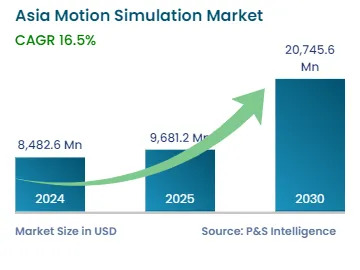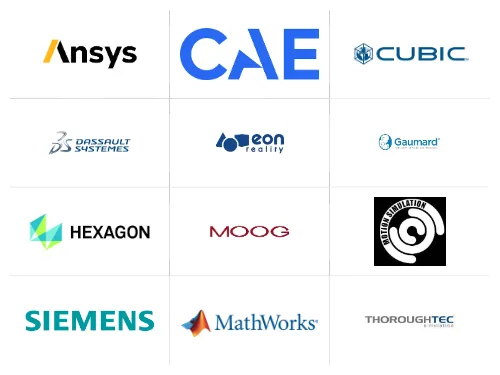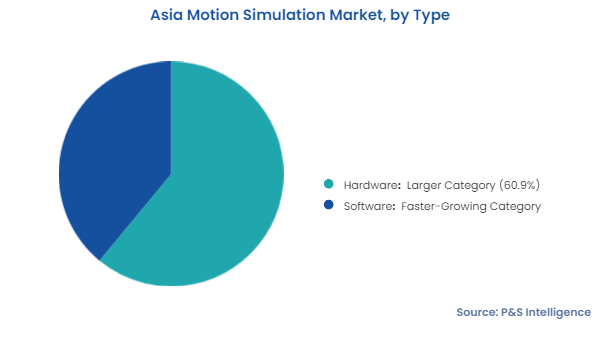Asia Motion Simulation Market Future Prospects
The Asia motion simulation market is estimated to generate USD 8,482.6 million in 2024 and grow with a CAGR of 16.5% during 2025-2030, reaching USD 20,745.6 million by 2030.
This is because of technological advancement, growing demand for high-quality training systems, and increased usage in industries such as aerospace, defense, automobile, and entertainment. Motion simulation, which often appears as motion tracking or motion control, is applied in various fields to simulate natural conditions in which real life may be experienced by people who train or test complex systems with zero risk of causing damage. Among these, key drivers for demand for motion simulators in that industry will include growth in the gaming and entertainment industry and increasing demand for VR and AR experiences.
In the automobile and aerospace sectors, motion simulation has been considered as one of the critical training tools for the driver and pilot. These systems make it possible to enhance safety, performance, and decision-making skills through real-time accurate feedback. Investment by governments in Asia in the defense and aerospace sectors combined with a higher focus on improvement in safety and performance is propelling the market's growth. Furthermore, the region is expanding the process of modernization for the defense, which has boosted the utilization of motion simulators used in military training.
The entertainment sector is very rapidly growing in VR and AR-based solutions for entertainment, especially in the countries of Japan, South Korea, and China. Motion simulators are used in theme parks, gaming centers, and VR arcades and thus would continue to boost the market as consumers are demanding innovative experiences.




